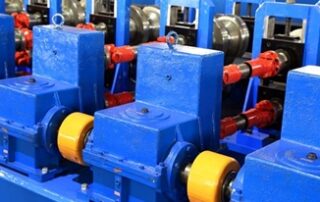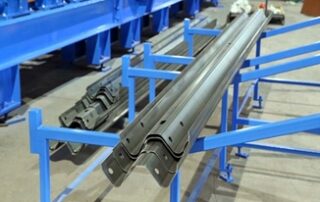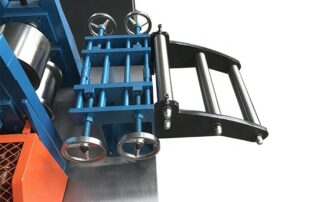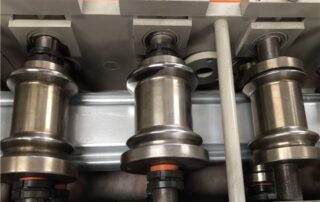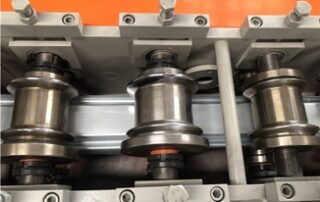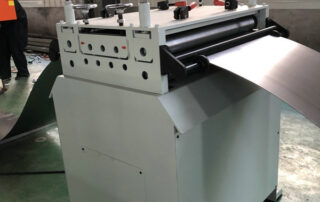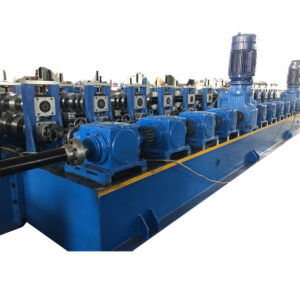
Entering the world of roll forming can feel overwhelming for those who are new to the industry. With its specialized processes, unique terminology, and countless applications, grasping the core concepts of roll forming is crucial for a strong foundation and understanding of this versatile manufacturing technique. This beginner’s guide will simplify your learning journey by introducing the key concepts and terminology associated with roll forming technology.
From essential terms to vital processes, this guide will provide clear explanations and real-world examples to help you navigate the world of roll forming with confidence. Get ready to embark on an educational journey as you explore the fascinating world of roll forming.
Understanding Roll Forming: The Process
Roll forming is a continuous metal forming process used to create custom shapes and profiles from sheet metal. The process involves passing a long strip of metal through multiple sets of rollers, which gradually bend and shape the material into the desired cross-section profile. Thanks to its efficiency, precision, and consistency, roll forming can produce a wide variety of products for different industries such as automotive, construction, and solar.
Essential Terminology: Key Terms to Know
To better understand roll forming, it’s essential to familiarize yourself with common terminology used in the industry:
- Coil: A roll of flat-rolled metal, typically steel or aluminum, wound into a continuous strip. Coils serve as the starting material for roll-forming processes.
- Feed: The process of guiding a coil into the roll-forming machine.
- Roll Forming Line: A series of machines and tools designed to handle and process metal from coils through various stages until the desired profile is achieved.
- Rollers: Cylindrical tools that are used in a roll-forming machine to bend and shape metal as it passes through each roll station. Rollers are specifically designed to create precise, incremental bends that result in the desired profile.
- Profile: The final cross-sectional shape of a metal component created by the roll-forming process.
- Miter: The angle between adjacent sides of a roll-formed profile, often used in the assembly of finished components.
- Punching: The process of creating holes, notches, or other cutouts in a metal profile, typically done before or during the roll-forming process.
Roll Forming Materials: Common Metals Used
Various metal materials can be processed using roll forming technology. Some of the most commonly used materials in the industry include:
- Cold Rolled Steel: Steel that has been processed at or near room temperature, providing a smooth surface finish, improved dimensional accuracy, and increased strength.
- Hot Rolled Steel: Steel that has been processed at high temperatures and exhibits a rough surface finish. It is typically less expensive and less precise than cold-rolled steel, making it suitable for less critical applications.
- Galvanized Steel: Steel coated with a thin layer of zinc, which protects against corrosion and improves durability.
- Stainless Steel: A corrosion-resistant steel alloy containing significant amounts of chromium and other alloying elements.
- Aluminum: A lightweight, corrosion-resistant metal that can be roll-formed into various shapes and sizes.
Tooling and Roll Design: Creating the Perfect Profile
One of the critical aspects of roll forming is the choice of tooling, which will determine the final shape and accuracy of the metal profile. Rollers are designed and machined to tight tolerances to ensure accurate and consistent formation of the desired profile. The design and manufacturing of tooling is typically achieved through the following steps:
- Concept Development: The initial idea for the roll-formed profile is conceptualized based on customer requirements, material properties, and manufacturing constraints.
- Engineering and Design: Using Computer-Aided Design (CAD) software, engineers create detailed drawings and models of the roll tooling, which dictate the dimensions and geometries of the individual rollers.
- Tooling Production: Rollers are manufactured using materials such as tool steel and carbide. High-quality, precision machining processes, such as CNC turning and grinding are used to fabricate the tooling to exact specifications.
- Test Runs: Once the tooling is complete, a series of test runs are performed to evaluate the performance of the rollers, making any necessary adjustments to ensure the final profile meets the required specifications.
Quality Control and Inspection: Ensuring Consistency
Maintaining strict quality control measures is essential in the roll forming industry to ensure that the final products meet customer specifications and industry standards. Key quality control methods used in roll forming include:
- Dimensional Inspection: Regular checks are performed on roll-formed profiles to assess dimensions using calipers, micrometers, height gauges, or coordinate measuring machines (CMMs) for more complex geometries.
- Visual Inspection: Operators and quality control teams visually inspect the finished profiles for surface defects, such as burrs, scratches, or other imperfections.
- Material Testing: Various tests may be performed on the roll-formed materials to ensure they meet required specifications, such as tensile strength, yield strength, or hardness.
Applications of Roll Formed Components: Diverse Industry Use
Roll-formed components are utilized in a wide range of industries and applications, due to their versatility, customization possibilities, and cost-effectiveness. Some common applications of roll forming include:
- Automotive: Vehicle components, such as bumpers, door frames, roof rails, and window channels.
- Construction: Building materials, such as framing studs, roof panels, siding, and window frames
With a solid understanding of the key concepts and terminology associated with roll forming technology, beginners can confidently navigate the industry and discover the numerous applications and benefits of this versatile manufacturing process.
Empower Your Company with Roller Die + Forming’s Roll Forming Expertise
Roll forming plays a vital role in various industries, offering versatility, efficiency, and precision in manufacturing custom profiles and components from sheet metal. Equipped with a comprehensive understanding of the key concepts and terminology, you now have a solid foundation to explore the possibilities in the roll forming world further.
Roller Die + Forming is a leader in providing roll-formed components, customized tooling, and unparalleled customer support to help clients excel in their respective sectors. As a trusted partner, we deliver innovative solutions tailored to your unique challenges, ensuring your roll forming needs are met with the utmost attention to detail and quality. Reach out to us today to discuss your roll forming requirements, and together, let’s create a future full of growth and success in the roll forming industry.
